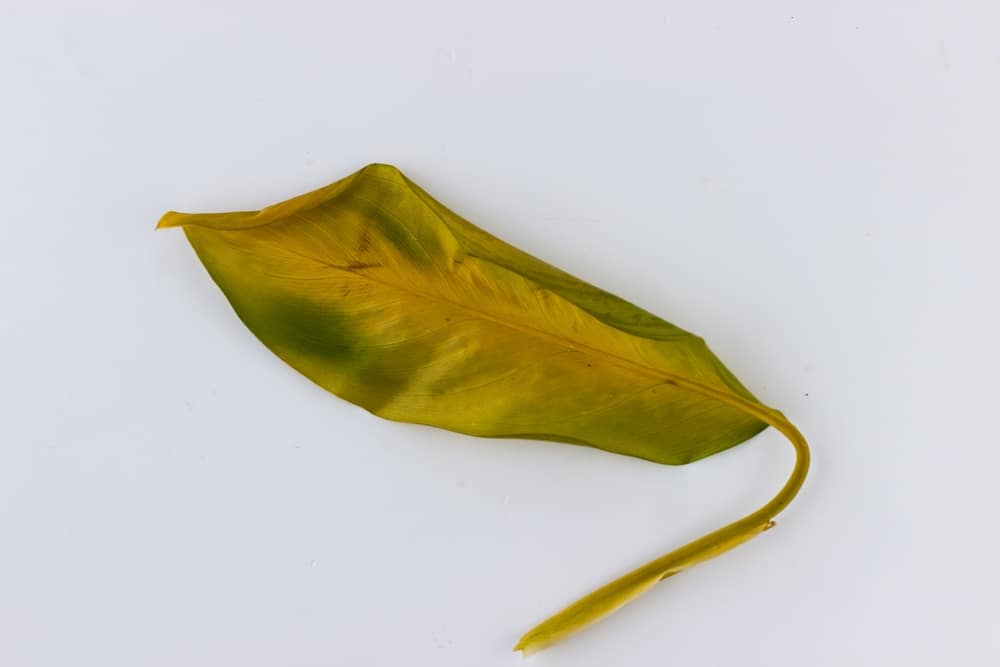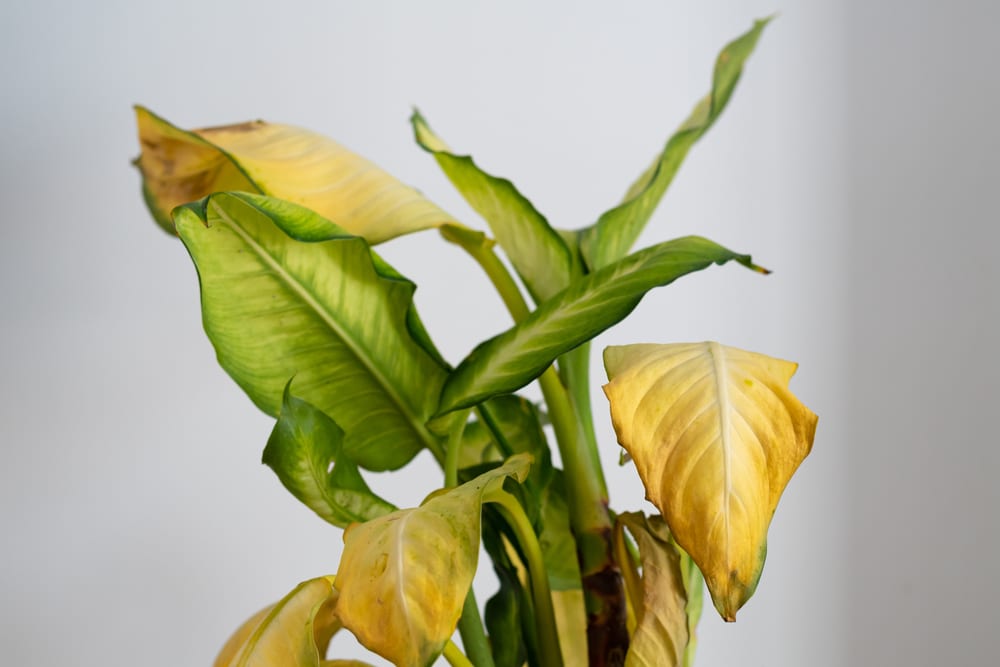The Dieffenbachia goes by the name ‘Dumb Cane’ and is a very popular houseplant in every part of the world. The Leopard Lily’s claim to fame is its adaptability and ability to brighten up any room with its uniquely patterned foliage. From time to time you might see dieffenbachia yellow leaves forming, or some parts of the plant have turned yellow and are seemingly stressed.
You may ask, ‘what to do when leaves are turning yellow?’ when caring for a dumb cane plant for the first time.
5 Reasons Why Your Dieffenbachia’s Leaves are Turning Yellow

Overly Wet Soil
Dieffenbachia often shows its displeasure with yellowing leaves and drooping if you’re saturating its soil with too much water. As a houseplant, dumb canes will be perfectly fine if a day or two passes by without them getting a drink. Care about them too much though, and your Leopard Lily might not live for a long time.
Overwatering is perhaps the most common issue of dieffenbachia yellow leaves. The plant doesn’t require frequent irrigation- just once a week or two is generally enough for it to thrive. Other than that, you’ll need to make sure the soil is well-draining, and that the pot has adequate drainage to allow excess water to pass through.
Too Cold
Dumb cane is a sub-tropical plant species and grows best in zones 10 through 12. However, most parts of the US can still grow the plant, albeit indoors and where it’s warmer.
Any location in your house that gets bright light and has a temperature range of 65 to 75 degrees F should be fine. When the atmosphere drops to below 50 degrees F, the dumb cane tends to be affected and will lose leaves or have them turn yellow. The same applies to when it’s winter and you open a window.
To prevent yellow dieffenbachia leaves it’s recommended that you find the right spot for your houseplant. Avoid putting them near doors and in places where there are drafts.
Nutrients Have Run Out
Does your potted dumb cane plant have green leaves for years, but is now turning yellow? Lack of nutrients is a likely culprit, especially if you water your plant right and are keeping it in a brightly lit and relatively warm environment.
Plants in pots don’t have the same luxury as specimens in yards and gardens since they can only access nutrients in their containers. Once it runs out it’s up to their owners to feed them. For dieffenbachia plants, it’s recommended that you give the plant a half-dose feeding of a well-balanced liquid fertilizer at the start of the growing season. An NPK mix of 10-10-10 should be enough to support their growth and foliage development. You can repeat the process once per month or until your dumb cane is growing at a nice pace and there isn’t a yellow leaf in sight.
Fungi or Bacteria
Pests and insects can stick to your Leopard Lily’s leaves and proceed to suck the sap out of the plant. Alternatively, yellow patches on the stems and leaves may indicate a possible bacterial or fungal infection, which must be treated immediately.
Give your dieffenbachia plant a good once-over to check for bugs and insects. Remove them by hand or spray with an organic insecticide or neem oil. For diseases, it’s best to isolate your plant from the rest and cut off yellowed or blackened foliage using sterilized scissors.
In the future, you can prevent fungi and bacteria by observing proper watering and not getting the leaves too wet.
Too Much or Too Little Light
The Dieffenbachia is typically an understory plant that lives beneath forest canopies, which explains why it’s partial to bright indirect light. That said, it will feel out of place in an area that gets direct sunlight and gets stressed. When this happens, you’ll likely see yellowing leaves with burnt or brown edges.
On the other hand, the dumb cane will not tolerate low-light conditions and its foliage will get weaker the longer the plant stays in the said environment. After a while your dumb cane will lose its leaf markings, then turn yellow due to lack of energy.
Remember, bright indirect light is best to have a happy dieffenbachia houseplant.
You May Also Like: Brown Spots on Pothos Leaves
